Vasculitis, an autoimmune condition characterized by inflammation of the blood vessels, can lead to serious health complications if left unmanaged. Inflammation can disrupt blood flow and damage vital organs.
Dietary strategies play a significant role in managing vasculitis, with an emphasis on adopting anti-inflammatory foods that may help reduce the severity of symptoms and potentially improve overall health.
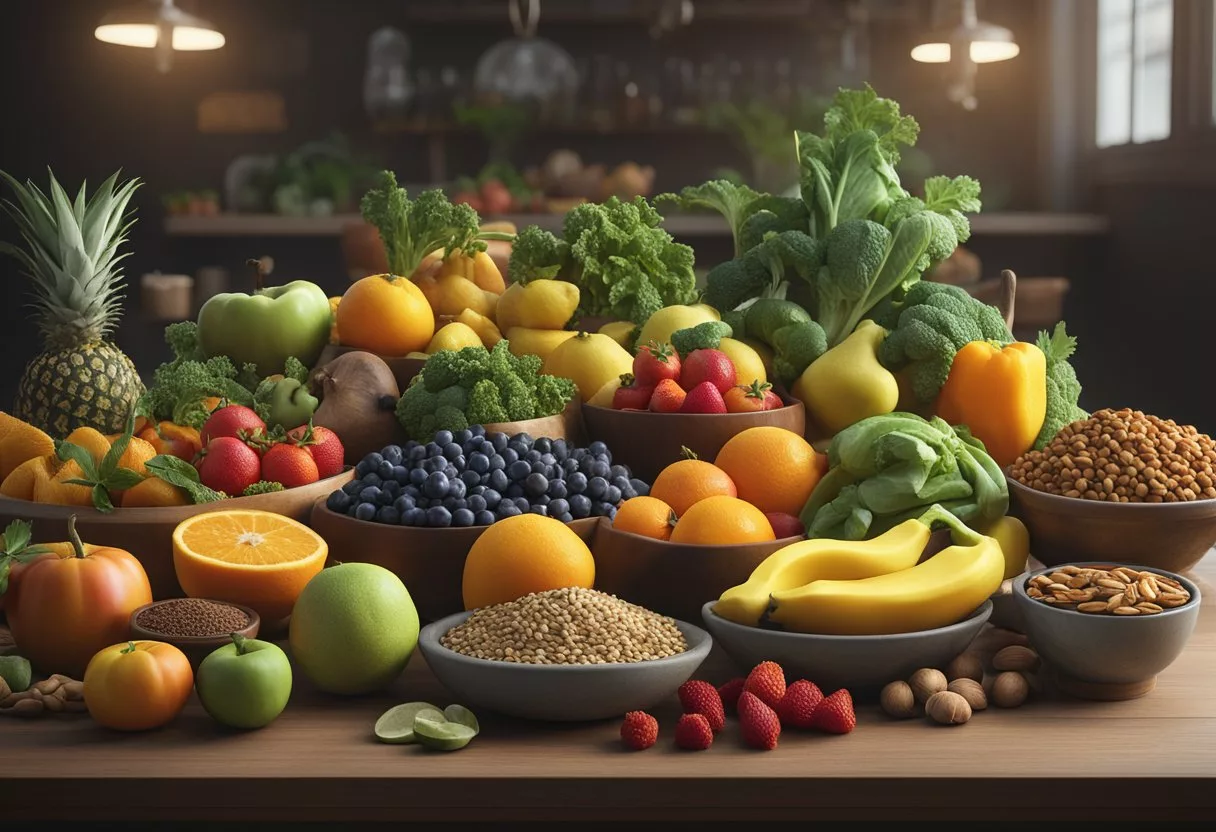
An anti-inflammatory diet for vasculitis is grounded in the consumption of whole, unprocessed foods that are known to combat inflammation.
This includes a variety of fruits, vegetables, whole grains, legumes, lean protein sources, and healthy fats such as olive oil.
These nutrient-rich foods not only aim to reduce inflammation but also support the immune system and overall health.
In contrast, it is advised to limit or avoid foods that can exacerbate inflammation, such as refined sugars, processed meats, and trans fats.
Key Takeaways
- Vasculitis involves the inflammation of blood vessels, which can be mitigated through dietary choices.
- An anti-inflammatory diet includes whole foods and emphasizes fruits, vegetables, and lean proteins.
- Limiting inflammatory foods like refined sugars and processed meats is also crucial for managing vasculitis.
What is Vasculitis?

Vasculitis is a complex condition that affects the blood vessels and can lead to severe health complications if not managed properly.
Definition and Types
Vasculitis refers to a group of disorders where there is inflammation of the blood vessels, including arteries, veins, and capillaries.
It’s a disease that can be either acute or chronic, potentially leading to damage and narrowing of the vessels.
Notable types of vasculitis include Behçet’s Disease, Churg-Strauss Syndrome, Giant Cell Arteritis, Microscopic Polyangiitis, and Wegener’s Granulomatosis. Each type has its own set of characteristics and affected vessel sizes.
Signs and Symptoms
The symptoms of vasculitis can vary widely depending on the type and organs involved but often include fatigue, fever, weight loss, muscle and joint pain.
Specific symptoms such as a persistent rash, kidney problems, or severe headaches may suggest the involvement of particular blood vessels.
For example, Giant Cell Arteritis often causes headaches and vision problems, while Wegener’s Granulomatosis may lead to sinus issues and pneumonia.
Causes and Risk Factors
Vasculitis is believed to be autoimmune in nature, occurring when the immune system mistakenly attacks the body’s own vessels.
The exact cause is often unknown, but it can be associated with infections, certain medications, and other autoimmune diseases.
Risk factors can include age, with conditions like Giant Cell Arteritis more common in older individuals, and genetics, which play a role in diseases like Behçet’s Disease.
Basics of an Anti-Inflammatory Diet
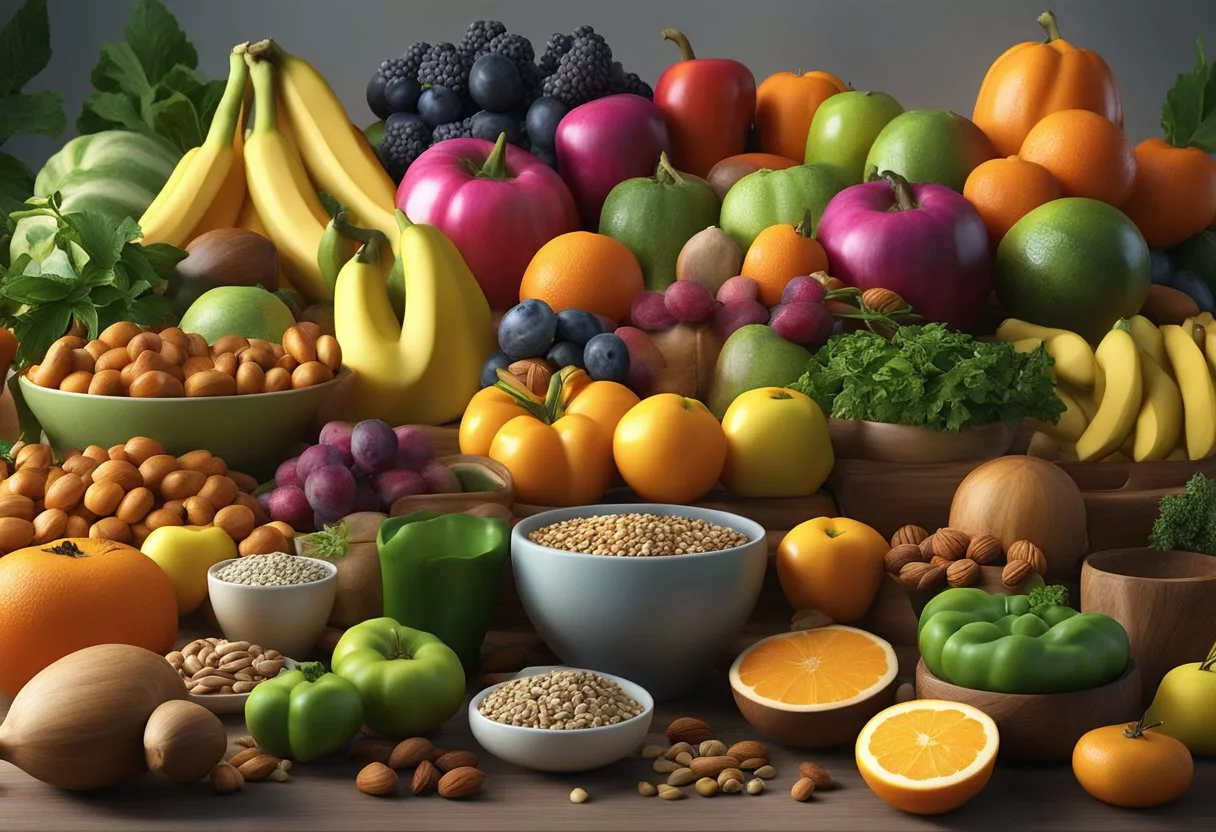
An anti-inflammatory diet is designed to reduce chronic inflammation, a key factor in various health conditions such as vasculitis. By focusing on specific nutrients and foods, this diet can play a crucial role in managing and alleviating inflammation-related symptoms.
Dietary Principles
To manage inflammation, it is essential to adopt dietary principles that support overall health.
A diet centered on whole, minimally processed foods is ideal.
This includes an ample variety of fruits and vegetables, which provide antioxidants and phytochemicals that help mitigate inflammation.
Whole grains are also a cornerstone of an anti-inflammatory diet as they are high in fiber, which aids in digestion and can help reduce inflammatory markers.
Consumption of proteins should be from lean sources, including fish rich in omega-3 fatty acids, like salmon and mackerel, which are known for their anti-inflammatory properties.
In addition to fish, other healthy protein sources such as legumes (beans, lentils) and nuts and seeds are encouraged.
Olive oil, a monounsaturated fat, is recommended as the primary fat source due to its potential to reduce inflammation.
Incorporating spices like turmeric, known for its curcumin content, can further assist in reducing inflammation.
This diet minimizes the intake of processed foods, sugary beverages, and refined carbohydrates, as these can exacerbate inflammation.
Key Nutrients and Foods
When adhering to an anti-inflammatory diet, focus on the following key nutrients and foods:
- Omega-3 fatty acids: Found in fatty fish such as salmon and sardines, as well as in flaxseeds and walnuts, these fatty acids are vital for combating inflammation.
- Antioxidants: A variety of colorful fruits and vegetables like berries, broccoli, and squash provide antioxidants that protect against cellular damage.
- Fiber: High-fiber foods including whole grains, fruits and vegetables, and legumes help to reduce inflammation and support a healthy gut.
- Healthy fats: Utilizing olive oil for cooking and dressings can provide the healthy fats critical for managing inflammation.
- Herbs and spices: Using spices like turmeric in cooking can offer anti-inflammatory benefits due to compounds like curcumin.
Specific Dietary Recommendations
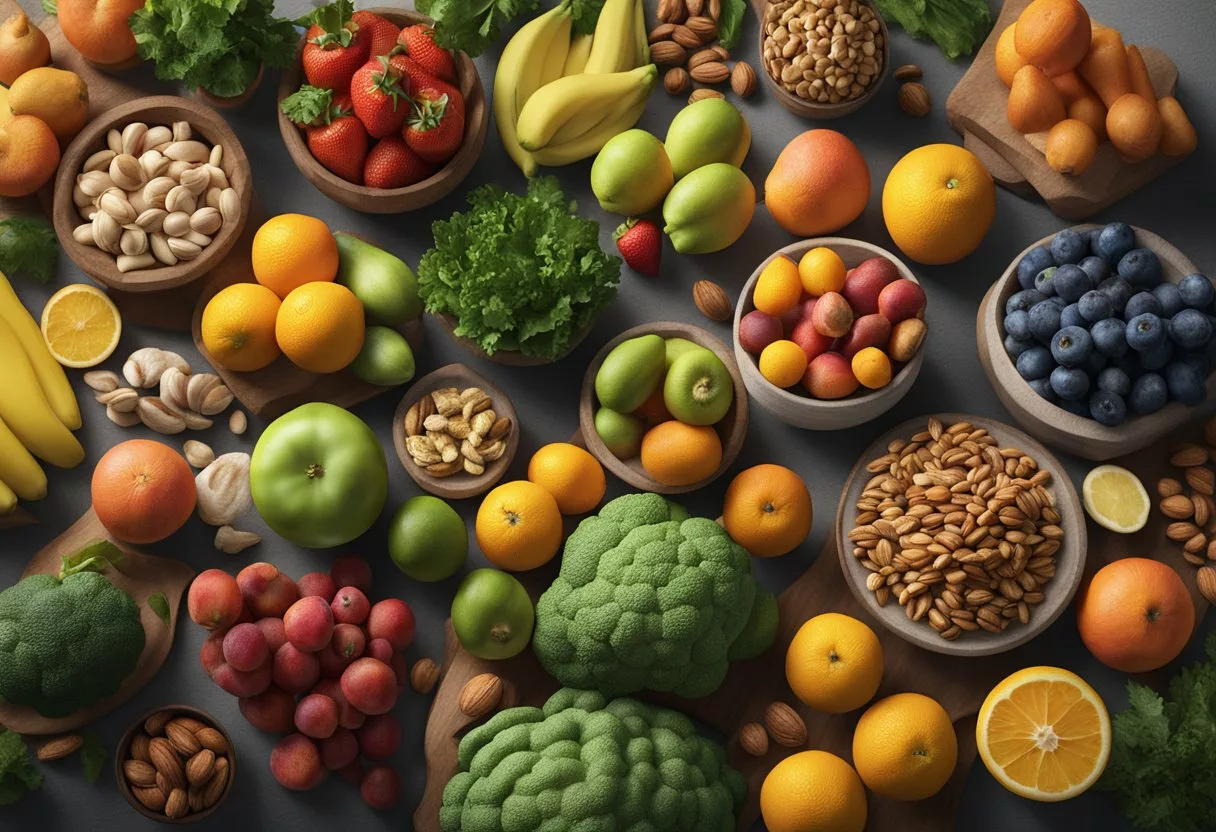
In managing vasculitis through diet, one focuses on anti-inflammatory foods that support overall health and reduce the body’s inflammatory response.
It’s important to discern what to include and avoid in your diet for optimal management of this condition.
Foods to Include
Mediterranean Diet: This diet emphasizes consuming fruits, vegetables, whole grains, legumes, nuts, and seeds.
It is also rich in mono- and polyunsaturated fats, such as those found in olive oil, which are known to have anti-inflammatory properties. Here are the components that should be included liberally:
- Omega-3 Fatty Acids: Found in fatty fish, flaxseeds, and walnuts, omega-3s help reduce inflammation.
- Antioxidants: Fruits and vegetables, like berries and leafy greens, are packed with antioxidants which combat inflammation.
Recommended Foods:
- Fruits and Vegetables: Focus on a variety, including leafy greens and berries for their anti-inflammatory benefits.
- Whole Grains: Opt for grains like quinoa, brown rice, and oats, which are less likely to promote inflammation.
- Healthy Fats: Include sources of healthy fats such as avocados, olive oil, and nuts.
Foods to Avoid
Processed Foods and Saturated Fats: These foods can exacerbate inflammation and should be limited in an anti-inflammatory diet. This includes:
- Processed Food: Anything heavily processed or with added preservatives should be avoided.
- Saturated Fat: Foods high in saturated fat like butter and fatty cuts of meat can increase inflammation.
- Salt: Excessive salt intake can worsen inflammation and strain on blood vessels.
Refined Sugars and Simple Carbohydrates: Consumption of these can lead to spikes in blood sugar and insulin levels, which may trigger an inflammatory response.
Specific Avoidances:
- Sugar: Minimize intake of sugars that can prompt an inflammatory process.
- Cookies and Sweets: These often contain both refined sugars and saturated fats, which are best avoided in an anti-inflammatory diet.
Managing Vasculitis with Nutrition

Proper nutrition is essential for individuals dealing with vasculitis, as diet can significantly impact both inflammation and the management of symptoms associated with the condition.
Nutritional strategies often focus on weight management and blood pressure control to mitigate risks like fatigue, joint pain, and complications such as high blood pressure or diabetes.
Weight Management
For patients experiencing vasculitis, weight management is a critical aspect of nutritional care. Excessive weight can exacerbate symptoms like joint pain and contribute to fatigue.
A balanced diet with an emphasis on whole foods can aid in maintaining a healthy weight. Here are some specific dietary considerations:
- Low-calorie vegetables and fruits: High in nutrients and fiber which can assist in weight loss.
- Lean proteins: Important for muscle maintenance without contributing excessive fats.
| Portion Sizes | Recommended Foods | Foods to Avoid |
|---|---|---|
| Smaller | Fish, poultry, beans | Processed meats, fried foods |
| Moderate | Whole grains | White bread, sugary cereals |
| Variable | Non-starchy vegetables | Starchy, high-calorie vegetables |
Blood Pressure Control
Blood pressure control is another key component for individuals with vasculitis, as high blood pressure can cause further damage to blood vessels. Managing sodium intake and consuming potassium-rich foods are strategies that can be employed.
- Reduce sodium: High sodium can lead to water retention and increased blood pressure. Reading labels and choosing lower-sodium options are effective methods to reduce intake.
- Increase potassium: Foods like bananas, spinach, and avocados can balance the effects of sodium and help lower blood pressure.
| Daily Nutrient Goals | Foods to Include | Foods to Limit |
|---|---|---|
| Sodium < 2,300mg | Fresh or frozen produce | Salty snacks, canned soups |
| Potassium-rich | Leafy greens, potatoes | Foods with added potassium salts |
Supplements and Natural Remedies
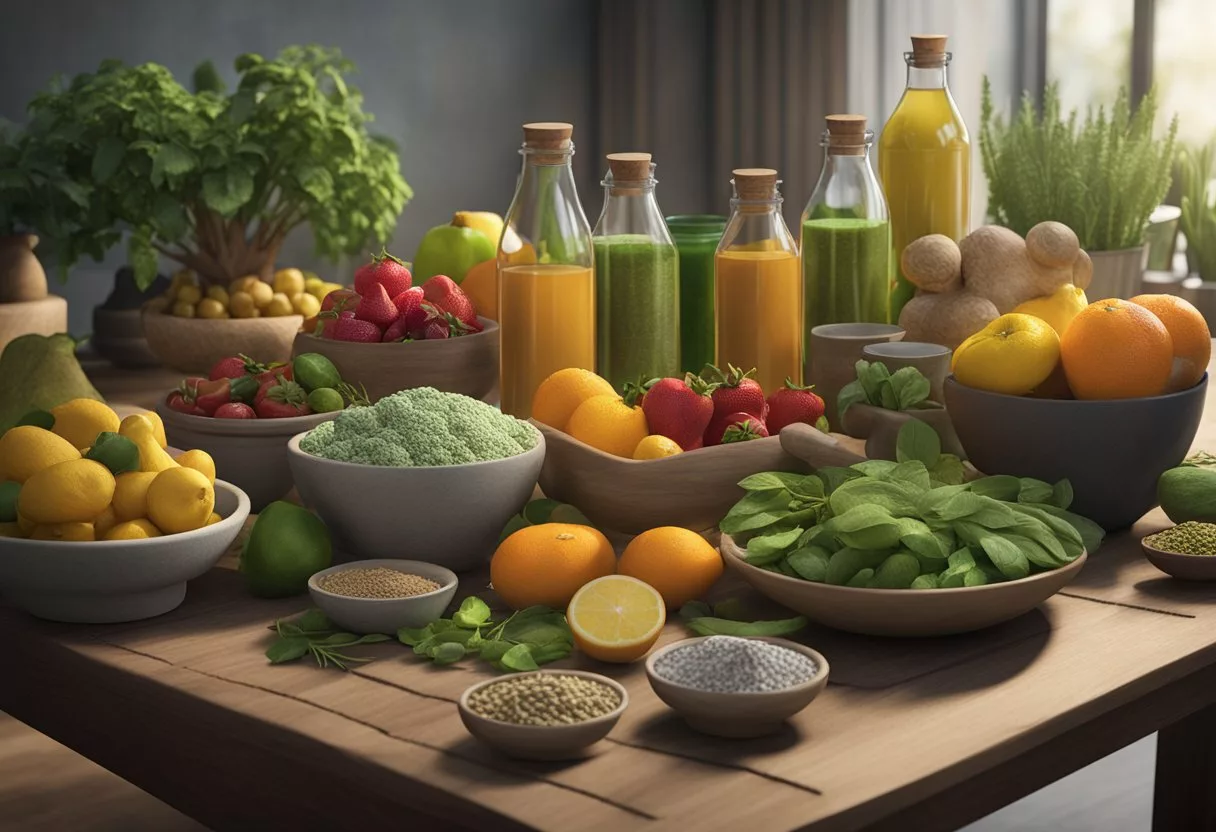
In managing vasculitis, an anti-inflammatory diet can be complemented with specific vitamins, minerals, and herbal supplements that target inflammation and bolster overall health.
Vitamins and Minerals
Certain vitamins and minerals play critical roles in reducing inflammation and strengthening the immune system.
Adequate levels of Vitamin D are essential, not only for its anti-inflammatory properties but also for calcium absorption, which is vital for maintaining bone health, especially when on long-term steroid therapy for vasculitis.
Foods like salmon and fortified dairy products, or responsible sun exposure can help maintain these nutrient levels, but supplements might be considered.
In addition, patients are encouraged to increase dietary calcium intake, utilizing sources like broccoli, yogurt, skimmed milk, and tinned sardines to support bone health, as indicated in information from Vasculitis UK.
Herbal Supplements
Herbal supplements can serve as natural adjuncts to a vasculitis diet plan.
Antioxidants are beneficial in combatting inflammation. They can be found in various foods and herbs or taken as supplements.
Tea, particularly green tea, contains a type of antioxidants called polyphenols, which have anti-inflammatory effects.
Additionally, incorporating extra-virgin olive oil, a staple in the anti-inflammatory Mediterranean diet, can provide the body with oleocanthal, which has properties similar to non-steroidal anti-inflammatory drugs.
While these remedies offer potential benefits, patients should first consult with a healthcare provider to ensure compatibility with their individual health needs and medication regimens.
Additional Lifestyle Considerations
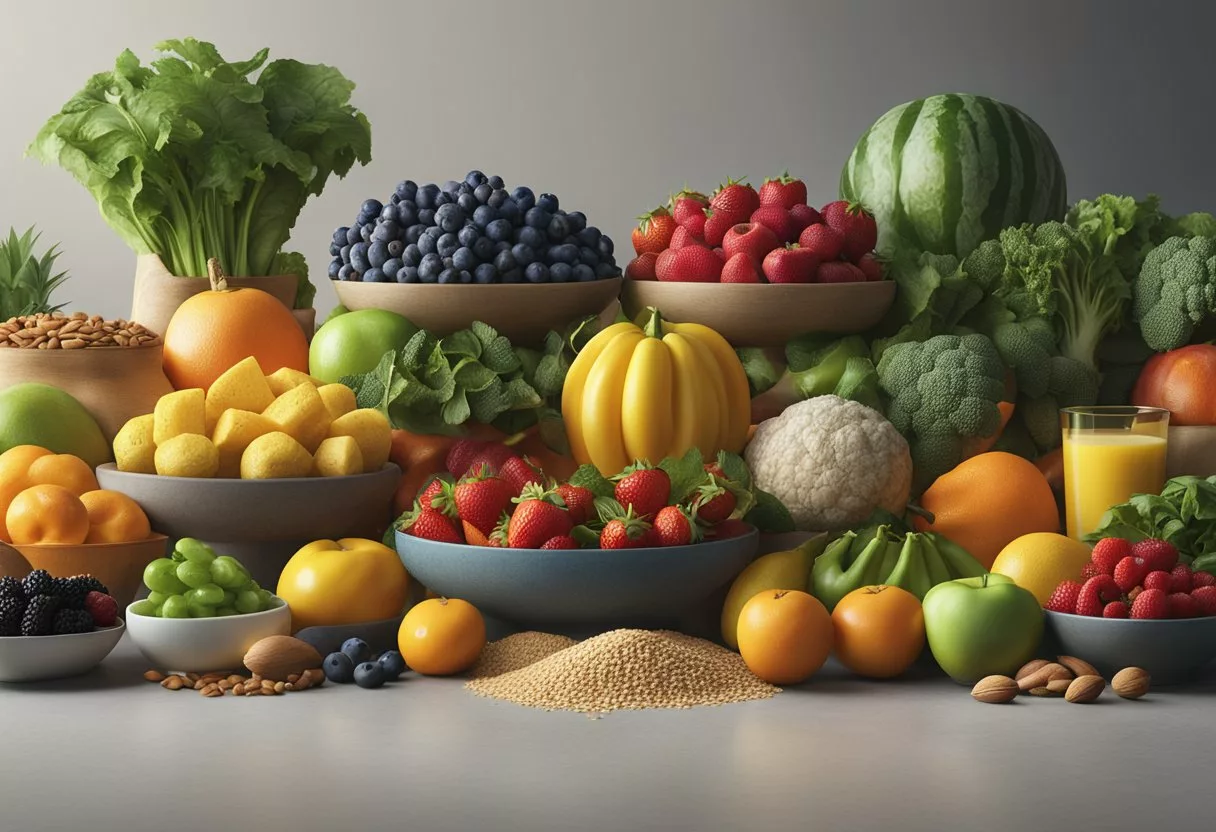
While adapting one’s diet is critical in managing vasculitis, incorporating additional lifestyle changes can further support overall well-being. These encompass regular exercise and activity, as well as strategies for stress reduction and ensuring ample support.
Exercise and Activity
Regular exercise plays a vital role in maintaining cardiovascular health and supports weight management.
For individuals with vasculitis, low-impact activities like swimming, walking, or cycling are often recommended.
It’s essential to consult with healthcare providers to tailor an exercise plan that accounts for one’s specific health status, with the aim to promote both physical and emotional well-being.
- Recommended Activities:
- Swimming
- Walking
- Cycling
- Considerations:
- Obtain medical advice before starting any exercise routine.
- Focus on low-impact exercises to minimize joint stress.
Stress Reduction and Support
Managing stress is key in controlling inflammation and vasculitis flares.
Techniques such as mindfulness, meditation, or yoga can be effective.
Support from family, friends, or vasculitis support groups can provide emotional comfort and practical advice, helping patients navigate the challenges of the condition.
- Stress-Reduction Techniques:
- Mindfulness
- Meditation
- Yoga
- Support Networks:
- Family and friends
- Support groups dedicated to vasculitis
- Professional counseling if necessary
Medical Treatments and Diet Interaction

When managing vasculitis, it’s crucial to understand how medical treatments interact with dietary choices. Given the complexity of the medications often prescribed, dietary considerations play a significant role in optimizing treatment efficacy and minimizing side effects.
Medication Adjustments
Specific medications used in the treatment of vasculitis, such as corticosteroids (e.g., prednisone) and immunosuppressive agents like azathioprine, cyclophosphamide, and methotrexate, require careful monitoring by healthcare professionals.
Adjustments to these medications may become necessary based on a patient’s response to treatment and any dietary changes they undertake.
For instance, corticosteroids can elevate blood sugar levels, necessitating adjustments in both the medication and dietary intake for those at risk of diabetes.
- Steroid use often requires:
- Increased calcium intake due to the risk of bone density loss.
- Monitoring of blood sugar levels due to increased risk of hyperglycemia.
- Cyclophosphamide treatment may involve:
- Hydration strategies to prevent bladder complications.
- Dietary changes to alleviate gastrointestinal side effects.
Dietary Considerations During Treatment
While undergoing treatment for vasculitis, dietary considerations can have a profound impact on the patient’s well-being.
The inflammation associated with vasculitis may be exacerbated by certain foods; consequently, a diet low in processed foods and refined sugars is recommended.
Incorporating anti-inflammatory foods like leafy greens and omega-3 rich fish can support the body’s ability to modulate inflammation.
Furthermore, patients receiving methotrexate are advised to increase their intake of folate-rich foods due to the medication’s tendency to deplete folate stores in the body.
Lastly, those preparing for or recovering from surgery may require a tailored diet to ensure proper healing and to mitigate any potential side effects of the treatment.
Working with Healthcare Professionals

When managing vasculitis, a condition often stemming from autoimmune disease, it is crucial to build a collaborative relationship with healthcare professionals. These relationships facilitate a tailored treatment plan and offer access to essential resources for dietary guidance.
Consulting a Nutritionist
Patients should consult a nutritionist who specializes in autoimmune disorders.
A trained nutritionist can provide an individualized eating plan that aims to reduce inflammation and accommodate the specific dietary needs associated with their diagnosis.
When meeting with a nutritionist, one should prepare questions about anti-inflammatory foods and ask for resources to assist with meal planning.
- Resources to request:
- Anti-inflammatory diet guides
- Tailored meal plans
- Lists of foods to avoid
Monitoring and Follow-Up
Regular monitoring and follow-up appointments with a doctor or nutritionist are essential for evaluating the effectiveness of the anti-inflammatory diet.
Patients should be prepared to discuss changes in symptoms and receive adjustments to their treatment plans accordingly.
- Frequency of follow-ups: depends on individual treatment response and changes in symptoms.
Treatment adjustments may include:
- Modifications to medication
- Dietary adjustments
- Additional tests or monitoring methods
Complications and Comorbid Conditions

Adopting an anti-inflammatory diet may be particularly beneficial for individuals with vasculitis, a condition characterized by inflammation of the blood vessels. Proper dietary management can play a role in mitigating complications and managing comorbid conditions associated with this immune system disorder.
Impact on Various Organs
Vasculitis has the potential to affect multiple organ systems, as it can cause narrowing, weakening, or scarring of blood vessels. When critical blood vessels are involved, organ function can be severely impacted.
For instance:
- Ears: Vasculitis may lead to sudden hearing loss, tinnitus, or vertigo.
- Brain: Inflammation can disrupt cerebral circulation, raising the risk of strokes or transient ischemic attacks.
- Lungs: The condition can affect lung function, potentially leading to shortness of breath or cough.
- Nose: Chronic inflammation might cause sores within the nostrils.
- Skin: Individuals can develop skin rashes, which manifests as red or purple spots, often itchy or painful.
- Kidneys: Vasculitis in the kidneys can impair renal function, sometimes evolving into chronic kidney disease.
Related Conditions
People with vasculitis often experience several related conditions that may exacerbate their symptoms or the severity of their primary disease. These comorbidities include:
- Arthritis: Joint inflammation is common, leading to pain and limited mobility.
- Autoimmune Disorders: Vasculitis itself may be associated with conditions like lupus or Sjogren’s syndrome.
- Cancer: Some forms of vasculitis can be linked to an increased risk for certain cancers.
- Gastrointestinal Disorders: The inflammation can extend to the gastrointestinal tract, causing pain and disrupting digestion.
- Heart Disease: The risk of cardiovascular events is elevated due to potential damage to coronary arteries.
- Skin Rashes: Chronic rashes, ulcers, or changes in skin color could signal ongoing vascular inflammation.
Frequently Asked Questions

Adopting an anti-inflammatory diet can play a vital role in controlling vasculitis by reducing inflammation and potentially preventing flares. This diet involves careful food selection to improve overall health and quality of life for individuals with vasculitis.
What foods should you include in an anti-inflammatory diet to manage vasculitis?
One should incorporate foods rich in omega-3 fatty acids, such as salmon and flaxseeds, as well as fruits and vegetables that provide antioxidants and polyphenols. Leafy greens and berries are particularly beneficial.
Which foods are known to exacerbate vasculitis symptoms and should be avoided?
Individuals with vasculitis should avoid processed foods, refined sugars, and saturated fats that can trigger inflammation. Foods with high levels of gluten or known allergens may also worsen symptoms and are better excluded from the diet.
What are the recommended dietary plans for someone diagnosed with vasculitis?
Dietary plans recommended for those with vasculitis emphasize a balanced intake of nutrient-dense foods that include lean proteins, whole grains, and a variety of fruits and vegetables. It’s important to tailor the diet to individual needs, possibly working with a healthcare professional to ensure all nutritional requirements are met.
What lifestyle changes can complement an anti-inflammatory diet in the treatment of vasculitis?
In addition to dietary adjustments, maintaining a healthy weight, engaging in regular physical activity, and managing stress are all important lifestyle changes. These practices can enhance the efficacy of an anti-inflammatory diet in managing vasculitis.
How can an anti-inflammatory diet differ from an autoimmune protocol diet when managing vasculitis?
An autoimmune protocol diet is more restrictive than a standard anti-inflammatory diet as it eliminates potential irritants like nightshades, nuts, seeds, and eggs to reduce inflammation. An anti-inflammatory diet does not necessarily exclude these foods unless they are identified triggers for an individual’s vasculitis symptoms.
Are there any specific recipes that can help in following an anti-inflammatory diet for vasculitis?
Many recipes are designed to support an anti-inflammatory diet. They feature ingredients like turmeric, ginger, and a variety of anti-inflammatory vegetables. Resources such as the Vasculitis Foundation may provide additional guidance on meal planning and recipes appropriate for managing vasculitis.
